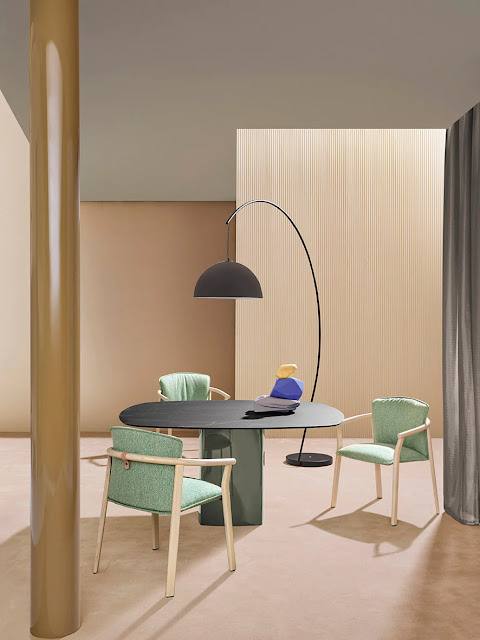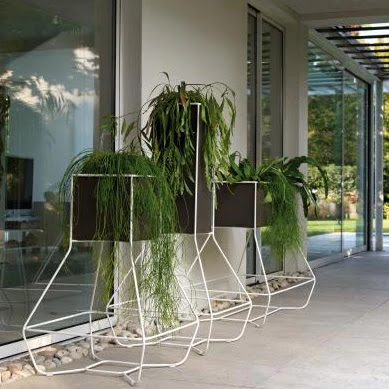1. Embrace Minimalism
When dealing with limited square footage, adopting a minimalist approach to decor can work wonders in creating a sense of openness and tranquillity. Emphasise the concept of "less is more" by selecting furniture pieces with sleek lines and a simple design, avoiding bulky or oversized items that can overwhelm the space. By curating a carefully selected collection of furniture and decor, you allow each element to shine and contribute to the overall harmony of the room. This minimalist approach also leaves more room to incorporate essential elements like small stools and square tables without crowding the area.
2. Multi-Functional Furniture
Small spaces demand furniture that goes above and beyond its primary function. Look for versatile pieces that offer hidden storage, such as ottomans with lift-up tops or coffee tables with built-in drawers. These clever additions not only provide discreet storage solutions for your belongings but also help keep the space organised and clutter-free. A small stool can double as both a seating option and a side table, serving as a handy surface to place your cup of coffee or a stack of books. Opt for a square extendable dining table that can be folded when not in use, saving precious space while accommodating extra guests during gatherings.
In compact interiors, floor space is limited, but the vertical space often remains underutilised. To make the most of this valuable resource, look to the walls for additional storage and decor opportunities. Install wall-mounted shelves and cabinets to keep the floor area clear and uncluttered. These shelves can house books, decorative items, and even small potted plants, adding both functionality and visual interest to the room. Utilising vertical space not only enhances the overall storage capacity but also draws the eyes upwards, creating an illusion of higher ceilings and a more spacious atmosphere.
4. Use Light Colours
Light colours have the magical ability to make small spaces appear larger and airier. Opt for a soft colour palette with whites, pastels, and neutrals to open up the room visually. These light hues reflect natural light, giving the space an inviting and airy feel. Additionally, light-coloured walls and furniture serve as a blank canvas, allowing you to introduce pops of colour through accessories and decorative elements. By keeping the base colour light and neutral, you give the impression of a more expansive interior, further enhancing the sense of space.
5. Reflective Surfaces
Mirrors and other reflective surfaces are excellent tools for visually expanding small spaces. Placing a large mirror on one wall can make the room feel more open by bouncing light and giving the impression of depth. Not only do mirrors serve a practical purpose, but they also act as striking decorative elements, adding a touch of elegance to the interior. Additionally, furniture with glass tops or polished finishes can contribute to the illusion of a more expansive space by reflecting light and making the room feel brighter and more spacious.
6. Let in Natural Light
Nothing enhances the feel of a small space quite like natural light. Maximise the amount of sunlight coming in by using sheer curtains or blinds that allow light to filter through while maintaining privacy. Avoid heavy drapes that can make the room feel closed off and dark. Additionally, keeping windows unobstructed by furniture or decor allows light to flow freely, brightening up the entire space. Natural light not only creates an inviting and cheerful atmosphere but also visually opens up the room, making it appear larger and more welcoming.
7. Go Vertical with Greenery
Introducing plants into small interiors not only adds a touch of nature but also contributes to better air quality and a sense of tranquillity. When floor space is limited, consider utilising vertical planters or hanging pots to bring greenery into the room without occupying valuable floor space. Hanging plants not only save space but also draw the eyes upwards, adding an element of visual interest to the room's verticality. Consider low-maintenance plants that thrive indoors, such as photos or spider plants, to add a splash of green to your compact space.
8. Consider Open Shelving
Closed cabinets can make a small space feel cramped and boxy. Instead, consider open shelving for displaying books, decorative items, and kitchen essentials. Open shelves provide a sense of openness while also making items easily accessible, reducing the need for additional storage furniture. You can choose from a variety of stylish open-shelving designs that suit your decor style, from floating shelves to wall-mounted modular units. Organising your belongings on open shelves can also serve as an opportunity to display your personality and showcase cherished items or mementoes.
9. Cohesive Design Elements
Maintaining a cohesive design throughout the small space is essential for creating a harmonious and visually pleasing environment. Stick to a consistent colour scheme, style, and theme to avoid a cluttered and chaotic look. When incorporating a small stool and square tables, ensure that they complement the overall design and aesthetics of the room. For example, if you have a contemporary theme, opt for sleek and minimalist stools and tables with clean lines. On the other hand, if your decor leans towards a rustic or bohemian style, consider selecting wooden or artisanal pieces that add warmth and character to the space.
10. Create Zones
Even in compact interiors, creating distinct zones for different activities can make the space feel more organised and purposeful. Utilise area rugs, furniture placement, and lighting to delineate specific areas such as a cosy reading nook, a dining space, or a workstation. By defining zones, you not only make the most of the available space but also create a sense of flow and coherence in your small interior. Each designated zone should serve its function effectively, and the furniture and decor in each area should be chosen thoughtfully to contribute to the overall design and atmosphere of the room.
Decorating and furnishing small spaces can be a delightful and rewarding experience with the right approach. By embracing minimalism, opting for multi-functional furniture, and optimising vertical space, you can create a spacious and stylish interior that doesn't compromise on comfort or aesthetics. Incorporating small stools and square tables into the design adds functionality and character to the space while adhering to a cohesive design theme. By using light colours, reflective surfaces, and natural light, you can open up the room visually, making it feel more inviting and expansive. With careful planning and creativity, you can transform your compact interiors into a charming and inviting haven that showcases your style and personality.
*Collaborative post



0 comments